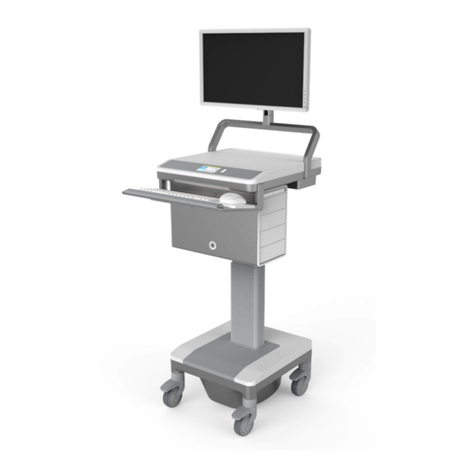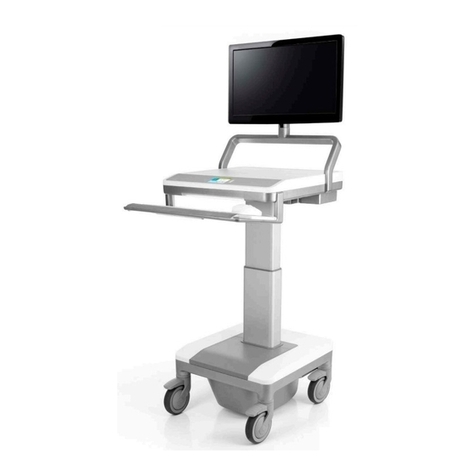
Table of Contents
4.10 Reports 29
4.10.1 Generating A Report 29
4.10.2 Viewing and Saving A Report 30
4.11 Manage Licenses 31
4.12 ADT Notifications 31
OPERATING INSTRUCTIONS
5.1 Login 32
5.2 Home Screen 32
5.2.1 Title Bar Buttons 33
5.2.2 User Name Button 33
5.2.3 Understanding On-Screen Prompts
and Barcode Scanning 34
5.3 Drawer States 35
5.4 Electronic Locking System 36
5.5 Mechanical Override Key Lock System 37
5.6 Assigning and Filling drawers 37
5.6.1 AutoScan - Barcode-Assisted
Drawer Assignment 38
5.6.2 Assigning a Drawer to a Patient
Manually 39
5.7 Assigning a Drawer as Storage 42
5.8 Unassigning and Reassigning Drawers 44
5.9 Opening Drawers to Administer Medication 46
5.9.1 Opening Patient Drawers 46
5.10 Opening Storage Drawers 50
5.11 Configurable Drawer Behavior 51
5.12 Opening Drawers Without Scanning Barcodes 52
5.13 Managing Drawers 54
5.13.1 Move Drawers 54
5.13.2 Add Extra Drawer 57
5.13.3 Move Drawer Content 59
5.13.4 Temporary Patient Drawer Assignment 61
5.13.5 Ejecting a Cassette 63
PHARMACY MODE 64
HELP AND TROUBLESHOOTING 65
LEGAL NOTICES 66
Humanscale®MedLink™ Medication
Distribution System 2
INTRODUCTION
1 About Humanscale Healthcare 4
1.1 Contact Information 4
1.2 Introduction to MedLink™ 5
1.3 About the T7™ Point-Of-Care
Technology Cart 5
SETTING UP MEDLINK™
2 About the MedLink™ Drawer System 6
2.1 Unpacking and Assembly 7
2.2 Installing Shelves into Cassettes 7
2.3 Installing Drawer Dividers 8
2.4 Inserting Drawers 8
2.5 Drawer Configurations 9
2.6 Inserting and Removing Cassettes 9
INITIAL SOFTWARE CONFIGURATION
3 Enabling MedLink™ Lite 11
4 MedLink™ Pro Configuration 13
4.1 Server Setup 13
4.2 MedLink™ Pro Configuration Menu 14
4.3 Departments 16
4.3.1 Department List 16
4.3.2 Add / Edit Departments 17
4.4 Users 18
4.4.1 Users List 18
4.4.2 Add / Edit Users 19
4.5 User Groups 20
4.5.1 User Groups List 20
4.5.2 Add / Edit User Groups 21
4.6 Rooms 23
4.7 Carts 23
4.7.1 Add/Edit Carts 24
4.8 Global Settings 25
4.9 Patient Labels 27
4.9.1 Drawer Labels 27
4.9.2 Drawer Patient Labels 28
3































